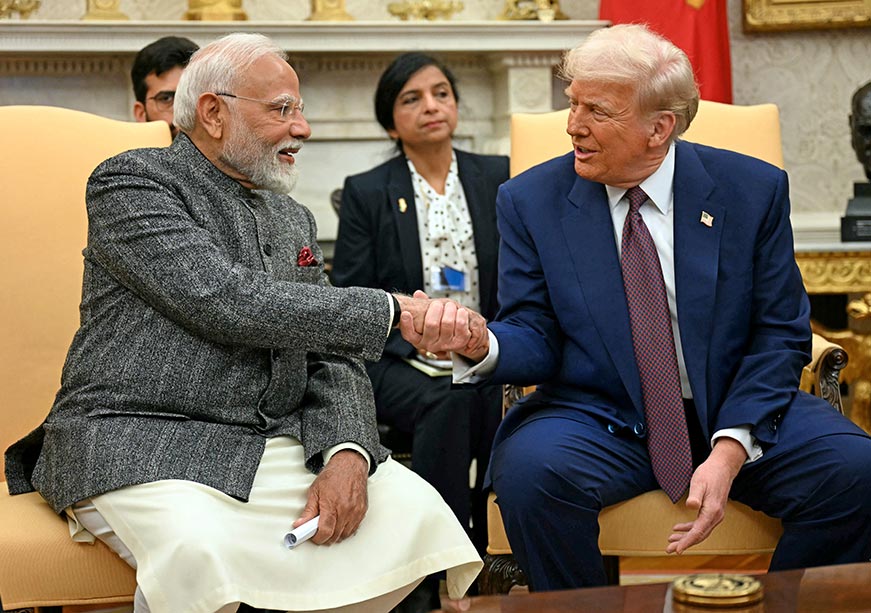-
CENTRES
Progammes & Centres
Location

Image Source: Getty
The broader Indian populace may have missed the nuances of President Donald Trump’s address on March 4 to the U.S. Congress, but his speech carried implications, both implicit and explicit, for India. First, the United States’ resolutely domestic orientation has impacted the world like never before. Second, the Trump administration’s unforgiving and at times incoherent policy choices since the inauguration have challenged allies, partners, and friends alike, forcing them to make adjustments of their own. At the forefront of this change are the administration’s trade policies in North America, specifically with its neighbors, Canada and Mexico, as well as a fundamental reversal on Ukraine. These radical swings in foreign policy serve as strong cautionary tales for countries that remain relatively unscathed by the Trump administration’s rapid policy salvos, such as India.
The Trump administration’s unforgiving and at times incoherent policy choices since the inauguration have challenged allies, partners, and friends alike, forcing them to make adjustments of their own.
Unsurprisingly, India was mentioned twice in Trump’s address in reference to reducing tariff asymmetry, which is a key concern for Trump. India remains one of the few countries that has a large trade surplus with the United States, close to about $42 billion in 2024.
Broadly, the sentiment around India-U.S. relations in New Delhi remains hopeful, in part because of the personal chemistry between the leaders of the two countries, enhancing expectations for dealmaking. India remains cautiously optimistic about its relations with the United States under the second Trump administration despite the flux.
The February meeting between Indian Prime Minister Narendra Modi and Trump in Washington suggested there was a serious attempt in New Delhi to prepare grounds for a soft landing of the bilateral relations amid potential turbulence. The visit proved promising in several new areas such as tech and defense, even as the older structural framework continued to shape the bilateral engagement. The path to working out a bilateral trade agreement by fall 2025 will be keenly watched, given the focus on trade in Washington. India, for its part, has already signaled that it could be ready to take a conciliatory path to trade negotiations with one of its most important strategic partners.
The visit proved promising in several new areas such as tech and defense, even as the older structural framework continued to shape the bilateral engagement.
Amid a policy of hard bargaining from the Trump administration across the board, economic coercion as a strategy to end the Ukraine-Russia war could have its own limits, especially when sovereignty, revisionism, and state power are so intertwined. Trump’s forceful diplomacy could secure a temporary ceasefire. But for a lasting peace, a New Delhi-Washington dialogue could carve a unique bridge in a fractured world. The revisionism inherent in Trump’s approach to the world could work for India in some areas. But in other areas, New Delhi is hoping that a serious engagement will deliver serious outcomes.
This commentary originally appeared in Council on Foreign Relations.
The views expressed above belong to the author(s). ORF research and analyses now available on Telegram! Click here to access our curated content — blogs, longforms and interviews.

Professor Harsh V. Pant is Vice President – Studies and Foreign Policy at Observer Research Foundation, New Delhi. He is a Professor of International Relations ...
Read More +
Vivek Mishra is Deputy Director – Strategic Studies Programme at the Observer Research Foundation. His work focuses on US foreign policy, domestic politics in the US, ...
Read More +